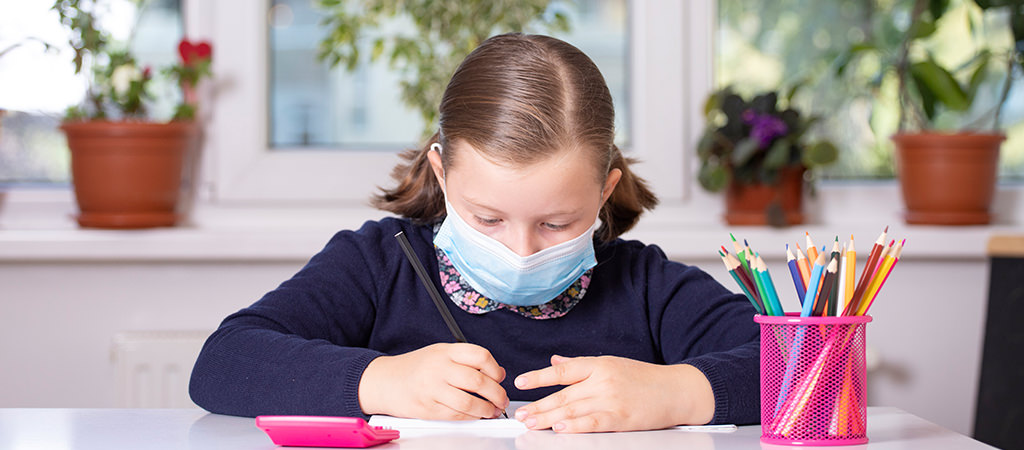
What Can You Do?
In the first article in this series on stress, anxiety, and depression in children and teens, I identified symptoms to be aware of as you observe your patients—or your children. In this article, I will be outlining actions that can be taken to proactively move in a positive direction to support and help each child.
STAY CALM
Jerry Bubrick, PhD of the Child Mind Institute in New York, New York encourages parents and caregivers to “stay calm”—as difficult as that may be. Children will reflect the emotion and behavior of those around them and of those they “model”. Worry that emerges in children and teens is often passed on to them from their parents.
So, deal with your own anxiety first. Carefully discover what is real and what isn’t. Be careful about media coverage. What is real? What is opinion? Manage fear or it will begin to manage you. If a person believes something—strongly enough—it becomes real in that person’s mind.
Discover healthy ways to deal with stress and anxiety and make those a part of the home. As care providers, integrate stress controlling entities into your practices and teach your parents how to do the same in their homes. (see the next article on self-care and stress control methods)
Dr. Bubrick says, “Be mindful of the present and stay focused on what is actually happening. Don’t let yourself go to ‘worst case scenarios’. He goes on to say, “If we’re showing our kids catastrophic thinking and head-in-hands worry and crying and fear, then they’re going to learn that’s the way to handle the times now.”
So, how does one stay calm in these ever-changing, stressful times?
- Be careful in what you read.
- Stay informed. Choose material that is informative and beneficial but not frightening and filled with “doomsday” projections.
- Limit time on TV. Limit news. Limit screen time.
- Be on top of things—but do not let yourself be obsessed and overwhelmed by the pandemic and politics.
- Focus on what is going well and what you are doing that is good.
- Focus on what is real—what is actually happening—not on “what might happen,”
- Stay in the moment. Focus on what is mentally healthy. Read positive material every day—yourself and to your children.
- Learn to realize when you are being engulfed by negativity and STOP! CHANGE DIRECTION! GO OUTSIDE! WALK! DO SOMETHING ELSE!
- Begin to recognize imaginary problems.
- Practice MINDFULNESS (NEXT ARTICLE) and teach these constructive practices to your children and child patients.
- Know that you can’t control what is going on—but you can control how you respond to the circumstances. Be a leader of yourself and of your family and of your patients/parents/team.
- Develop Routines.
- As was discussed in the previous article, children and teens need routines. Develop routines that are healthy and productive. Because of the lack of routines or of the disruption of routines over the past year +, there is much disequilibrium. Establish as many routines as possible and make the routines a “healthy” part of your world. Routines, such as the following:
- Exercise
- Meals
- Sleep
- School and study—virtual or otherwise
- Outside time
- Fun time
- Family time
- Check in with kids. Sit quietly
Additional Support for Children and Teens
Do not hesitate to establish relationships with pediatricians, psychologists, and/or guidance counselors. These specialists will be able and willing to provide guidance, information, and support for you, your children, and/or patients. They know ways to help these young—perhaps vulnerable—people build resilience and develop coping mechanisms.
Know that your pediatricians can screen for depression evaluate any concerns related to extreme anxiety or stress. For a teenager, please consider allowing him/her to have private time with a care provider to make sure that they have a chance to discuss their concerns or situation as openly and freely as possible. There may be things they do not wish to discuss with a parent present. The physician is a safe, caring place for the young person to express concerns. It’s important to offer your teen some privacy to talk with the pediatrician during the visit to ensure they have the chance to speak as openly as possible.
Certain children and/or teens need more private time and more “space” than others based on their personality and individual preferences. That’s fine. Just know when this need to be alone may have reached an extreme and, perhaps, unhealthy level. Some children or adolescents want and need to communicate and express their thoughts, concerns, and feelings. Give them the space and the permission to do so without judgment. Others who are less overt may find other methods of self-expression to be more comfortable and appropriate—gradual conversations, art activities, music, outdoor activities, games, exercise. Any or all of these activities can help a young person (or anyone) handle stress. So, direct—or indirect conversations are both appropriate. It depends on the individual child or young person and the situation. Be patient. Observe. Be kind. Building trust is imperative.
A word about suicide risk
Rates of suicide for both adolescents and adults increase during times of high stress. In addition to screening for depression, your pediatrician can screen for suicide risk. Certain data during the Covid Pandemic shows a 10% increase in teen suicides. This must be taken seriously!
Please know that not all people who actually attempt suicide openly talk about it. On the other hand, there are certain people who do talk about it, but do not take action. However, any talk about suicide must be taken seriously. If you are concerned about your child at any level, it is absolutely essential that you make your home safe. Remove all weapons and ammunition from the house. Remove and/or lock away any and all medications. Try to have someone with your child at all times. And get help. Don’t walk this path alone.
Reach out for help immediately. Contact the National Suicide Prevention Lifeline at 1-800-273-TALK or text the Crisis Text Line by texting ‘TALK’ to 741741. Reserve 911 for a crisis situation where harmful actions are happening or are about to happen. In a non-crisis situation, go to or contact your pediatrician. Stress the emergent situation so that you get rapid response from your physician. Speak honestly about your concerns related to your child’s mental state and mental health—or lack thereof. The worst thing you can do is think—“Oh, maybe I am overreacting”—and do nothing only to be sorry when it is too late.
Remember
Keep lines of communication open between you and your child, and don’t hesitate to talk with your pediatrician about ways to help maintain your family’s mental health during this difficult time.
There is great strength, healing and power in positivity. Focus on that which is good. Start each day with expressions of gratitude and end each day with statements of thanks for at least one thing that has been good—even if it is one small act of kindness that was given or received. If you encourage your children to reach out to others to provide help, encouragement, and kindness, they will feel better each and every day. Truly, it is better to give than to receive and in the giving, we are blessed and healed.


